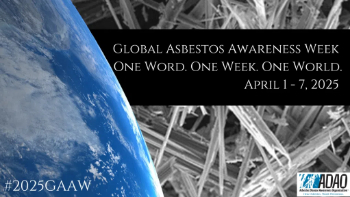Heat
Heat is the energy that is transferred between different systems as a result of thermodynamic interactions.
Heat differs from temperature, which is a measure of the average kinetic energy of molecules. Temperature will tend to vary throughout a body depending on its heat exchange with its surroundings. For more information, see Temperature in buildings.
This process of thermal exchange is known as heat transfer and generally, the net heat transfer between two systems will be from the hotter system to the cooler system. Very broadly, the mechanisms of heat transfer can be described as:
NB: Fluids can also be used to transfer heat within a building by 'mass transfer', for example by the flow of a refrigerant, chilled water or hot water around a building to provide heating or cooling.
Heat transfer is particularly important in buildings for determining the design of the building fabric, and for designing the passive and active systems necessary to deliver the required thermal conditions for the minimum consumption of resources.
For more information see: Heat transfer.
When heat energy is added to a substance, its temperature generally rises, and when heat energy is removed, its temperature generally falls. This is referred to as ‘sensible heat’. However, when a substance changes state, such as from a solid to a liquid, a liquid to a gas or vice versa, this change requires the addition or removal of heat energy, but does not result in a change in the temperature of the substance. This is referred to as latent heat.
For more information see: Sensible heat and Latent heat.
Examples of heat sources include:
- Solid fuel – timber, coal, peat, biomass.
- Liquid – oil, liquid petroleum gas (LPG).
- Gas - natural gas, biogas.
- Electricity - grid, wind turbines, hydroelectricity, photovoltaics.
- Water – solar thermal, geothermal, ground source, water source.
- Air source.
- Heat recovery.
- Passive – solar gain, thermal mass.
- Internal heat loads - heat generated by people and equipment.
Heating in buildings may be necessary to:
- Create comfortable conditions for occupants.
- To prevent condensation.
- For activities such as drying and cooking.
- For industrial processes.
In commercial buildings, heating for comfort might be provided alongside other building services in heating, ventilation and air conditioning (HVAC) systems. In dwellings, heating is typically provided by central heating systems, in which heat is distributed from a central source.
Heat can be a risk to health and safety. Heat stress is a form of overheating that the occupants of a building may experience when the measures their body uses to regulate internal temperature begin to fail. CIBSE define overheating as, 'conditions when the comfortable internal temperature threshold of 28°C is surpassed for over 1% of the time.' They also define 35°C as the internal temperature above which there is a significant danger of heat stress.
For more information see: Heat stress.
Designing Buildings has a range of articles relating to heat, including:
- A technical guide to district heating (FB 72).
- Boiler.
- Building heating systems.
- Building services.
- Co-heating test.
- Conduction.
- Convection.
- Ground source heat pumps.
- Heat interface units.
- Heat meter.
- Heat metering.
- Heat pump.
- Heat recovery.
- Heat source.
- Heat stress.
- Heat transfer.
- Heatwave.
- Latent heat.
- Low carbon heating and cooling.
- National heat map.
- Overheating.
- Overheating - assessment protocol.
- Overheating in residential properties.
- Preventing overheating.
- Radiant heating.
- Radiation.
- Sensible heat.
- Solar gain.
- Specific heat capacity.
- The future of heat.
- Thermal comfort.
- Thermal mass.
- Types of domestic heating system.
- U value.
- Urban heat island.
- What can government do about district heating.
Featured articles and news
British architecture 1919–39. Book review.
Conservation of listed prefabs in Moseley.
Energy industry calls for urgent reform.
Heritage staff wellbeing at work survey.
A five minute introduction.
50th Golden anniversary ECA Edmundson apprentice award
Showcasing the very best electrotechnical and engineering services for half a century.
Welsh government consults on HRBs and reg changes
Seeking feedback on a new regulatory regime and a broad range of issues.
CIOB Client Guide (2nd edition) March 2025
Free download covering statutory dutyholder roles under the Building Safety Act and much more.
AI and automation in 3D modelling and spatial design
Can almost half of design development tasks be automated?
Minister quizzed, as responsibility transfers to MHCLG and BSR publishes new building control guidance.
UK environmental regulations reform 2025
Amid wider new approaches to ensure regulators and regulation support growth.
The maintenance challenge of tenements.
BSRIA Statutory Compliance Inspection Checklist
BG80/2025 now significantly updated to include requirements related to important changes in legislation.
Shortlist for the 2025 Roofscape Design Awards
Talent and innovation showcase announcement from the trussed rafter industry.
OpenUSD possibilities: Look before you leap
Being ready for the OpenUSD solutions set to transform architecture and design.
Global Asbestos Awareness Week 2025
Highlighting the continuing threat to trades persons.
Retrofit of Buildings, a CIOB Technical Publication
Now available in Arabic and Chinese as well as English.
























